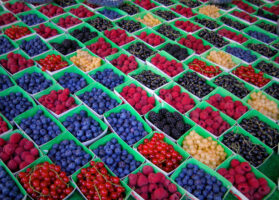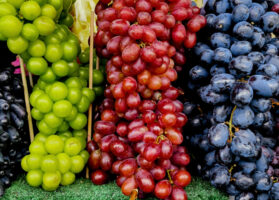Avocado production in San Diego collapses. Producers cite drought, heat waves
Overview of avocados from California in the U.S. market, complemented by charts from Agronometrics. Original published on October 6, 2022.
Avocado growers in San Diego County are facing difficult times due to rising water costs combined with ongoing drought and heat waves.
Last year’s crop brought in just $82.8 million across the region, according to the county’s annual crop report, compared to $152.9 million in 2020. It was the first time since 1996 that the fruit brought in less than $100 million a year.
Productivity was the top concern for avocado growers in 2021. Trees produced an average of 2 tons per acre, up from 4 tons per acre last year. The amount of land harvested remained constant while the value of the crop increased slightly to $3,117 per ton.
According to the report, the lack of precipitation played a significant role. San Diego has had two consecutive years of below-average rainfall, and farmers said they are feeling the effects.
“We hope the hell we have a wet winter,” said Bob Lucy of the Del Rey Avocado Company in Fallbrook. “The last couple of years it’s been really tough because of the drought.”
Growers had to irrigate year-round, which not only costs more but also doesn’t flush salts out of the soil as effectively, Lucy said. “We didn’t have those winter rains that leach the soil and make the trees happier.”

Source: USDA Market News via Agronometrics.
(Agronometrics users can view this chart with live updates here)
As California grapples with record droughts, heatwaves have also exacerbated the woes of growers in the county. High temperatures have caused trees to aggressively shed avocados before they are ripe, Lucy explained.
“We always see a bit of August drop; That’s natural,” says the long-time farmer, “but when you have 100 degrees four or five days in a row, it can be a real challenge.”
Avocado farmers have increasingly taken land out of production as water costs have skyrocketed. Producers harvested 14,458 acres last year, up from more than 26,000 acres in 2007. During the period, the wholesale cost of water roughly tripled.
Smaller, closely spaced avocado trees are growing on a 10-acre plot in Fallbrook in 2021.
(Eduardo Contreras/The San Diego Union-Tribune)
For more than a year, the Fallbrook Public Utility District and the Rainbow Municipal Water District have been trying to sever ties with the county’s wholesaler, the San Diego County Water Authority. Those agencies want to join the Eastern Municipal Water District in Riverside County, where they believe water prices will be less volatile.
“We hope it helps stabilize agriculture,” said Jack Bebee, executive director of the Fallbrook Water Board.
Water requirements in Fallbrook have dropped from about 20,000 acre feet per year to just 8,000 acre feet per year over the past two decades. (An acre foot is enough water to cover an acre one foot deep or 325,851 gallons.)
The situation has forced the agency to increase its rates to cover a number of fixed costs, Bebee said. “Our system was built for large avocado groves, and removing them all will only put more pressure on residential water bills.”
Water board officials have argued that any savings these water boards are making would be short-lived. They’ve also said that joining Eastern could expose those agencies to state drought restrictions, which the San Diego wholesaler has been aggressively trying to avoid.
San Diego’s Local Agency Formation Commission is expected to rule on the largely unprecedented application early next year.
According to the report, bedding plants, perennials, cacti and succulents were the biggest cash crops in San Diego County’s $1.75 billion agribusiness last year. They supplanted ornamental trees and shrubs, which have held the distinction for the past 12 years.
Honey and beeswax suffered the largest declines. While produce represented only a small portion of the overall farm economy, produce fell by 85 percent, largely due to the drought affecting bees’ ability to make honey.
The News in Charts is a collection of stories from the industry complemented by charts from Agronometrics to help better tell their story.
Access the original article with this (Link)






